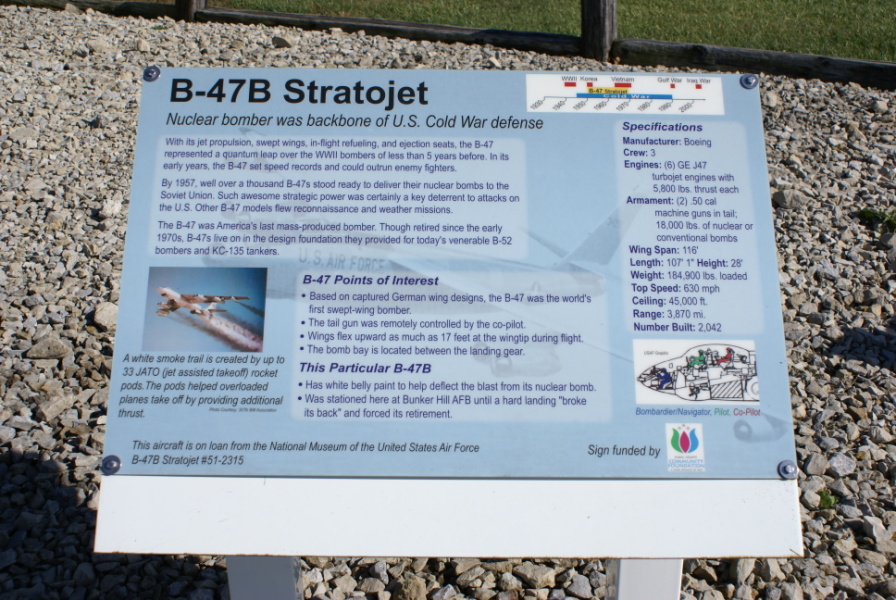| Prev |
heroicrelics.org Grissom Air Museum Site Index B-47 Stratojet Gallery |
Next |
dsc58972.jpg
The sign accompanying the B-47B. It reads
B-47B Stratojet
Nuclear bomber was backbone of U.S. Cold War defense
With its jet propulsion, swept wings, in-flight refueling, and ejection seats, the B-47 represented a quantum leap over WWII bombers of less than 5 years before. In its early years, the B-47 set speed records and could outrun enemy fighters.
By 1957, well over a thousand B-47s stood ready to deliver their nuclear bombs to the Soviet Union. Such awesome strategic power was certainly a key deterrent to attacks on the U.S. Other B-47 models flew reconnaissance and weather missions.
The B-47 was America's last mass-produced bomber. Though retired since the early 1970s, B-47s live on in the design foundation they provided for today's venerable B-52 bombers and KC-135 tankers.
B-47 Points of Interest
- Based on captured German wing designs, the B-47 was the world's first swept-wing bomber.
- The tail gun was remotely controlled by the co-pilot.
- Wings flex upward as much as 17 feet at the wingtip during flight.
- The bomb bay is located between the landing gear.
This Particular B-47B
- Has white belly paint to help deflect the blast from its nuclear bomb.
- Was stationed here at Bunker Hill AFB until a hard landing "broke its back" and forced its retirement.
Specifications Manufacturer: Boeing Crew: 3 Engines: (6) GE J47 turbojet engines with 5,8000 lbs thrust each Armament: (2) .50 cal machine guns in tail; 18,000 lbs of nuclear or conventional bombs Wing Span: 116' Length: 107' 1" Height: 28' Weight: 184,900 lbs loaded Top Speed: 630 mph Ceiling: 45,000 ft. Range: 3,870 mi. Number Built: 2,042 This aircraft is on loan from the National Museum of the United States Air Force
B-47B Stratojet #51-2315

| Time picture taken | Sun Oct 26 14:57:40 2008 |
| Location picture taken | Museum grounds Grissom Air Museum Peru, Indiana |
| Prev | B-47 Stratojet Gallery | Next |